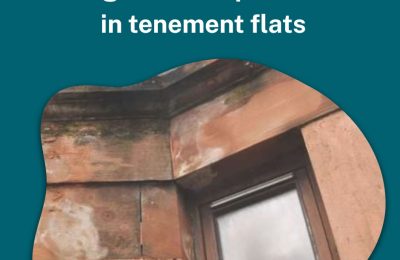The First-tier Tribunal for Scotland (Housing and Property Chamber) exists to make decisions on cases that relate to housing. Prior to the First-tier Tribunal, cases related to housing would have been handled by two separate entities – the Private Rented Housing Panel (PRHP) and the Homeowner Housing Panel (HOHP). The current First-tier Tribunal system handles the combined functions that each of these separate services would have handled previously.
In the private rented sector, cases that could be taken to the Tribunal include those relating to repairing standards, or landlord’s right to entry. Before making an application to the Tribunal, both parties should try to settle their dispute on their own. SDS Resolve is a free mediation and conciliation service that tenants and landlords can use without the need for any formal adjudication from the Tribunal. Evidence that there has been an attempt to resolve the matter should be provided when making an application to the tribunal.
Carrying out repairs
One of the functions of the First-tier Tribunal is to assess that private rented properties meet both the Repairing Standard and the Tolerable Standard. Before making an application to the First-tier Tribunal, the tenant should report any necessary repairs to the landlord or letting agent, and only when there is a failure on their end to follow through with repairs should the tenant then submit an application to the First-tier Tribunal.
It is suggested that when informing the landlord or letting agent of repair issues that the tenant does so via email, so as to leave a paper trail of written evidence that can be referred to if need be. It is vital that the email is also dated and includes the address as well as a detailed description of the issue. The tenant should also include their own contact details on the email so that the Tribunal can verify the landlord was provided with a means of contacting the tenant. It is also recommended that the email includes pictures of the items that require repairs.
Following notice for the landlord that there are repairs required, it is up to them to resolve this. If they have not responded after a week, another email should be sent. Should they still fail to respond, this is when an application to the Housing and Property Chamber would be made. The First-tier Tribunal website has an application form that can be used. A copy of the lease and tenancy agreement should also be provided alongside the application form.
Landlord right of entry
Though a tenant may be renting the property, the property is still owned by the landlord and they have the right to enter even if there is a tenant living there. The landlord may require entry to carry out any work necessary to ensure the property meets the repairing standard, or to inspect the property. Unless in the case of an emergency, however, the landlord must give the tenant a minimum of 24 hours’ notice for a short assured tenancy and 48 hours’ notice for a private residential tenancy. They should also provide the tenant with the reason why they require entry into the property.
The landlord can make an application to the First-tier Tribunal if the tenant refuses to let the landlord into the property. The Tribunal will get in touch with the tenant and try to come to an agreement on a suitable date for the landlord to enter the property.
Unprotected deposits
After the tenant has paid their deposit, the landlord or letting agent is required by law to lodge the deposit with a tenancy deposit scheme such as SafeDeposits Scotland. If the deposit has not been protected after 30 working days from the tenancy start date, or the tenant has not been provided with necessary prescribed information, the tenant can take the landlord to the First-tier Tribunal and could be awarded up to three times the original deposit amount from the landlord. SafeDeposits Scotland notifies all tenants when their deposit has been registered. If a tenant is uncertain as to whether their deposit has been protected, they should check in the first instance with their landlord. They can also contact the three tenancy deposit protection schemes operating in Scotland to establish if the deposit is held by one of them. Tenants making an application to the Tribunal for an unprotected deposit should do so either during the tenancy or up to three months after the tenancy ends.











